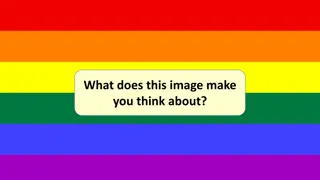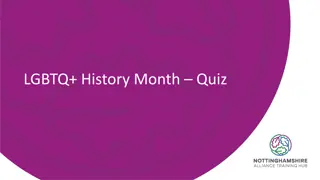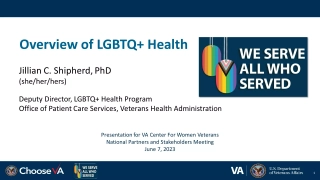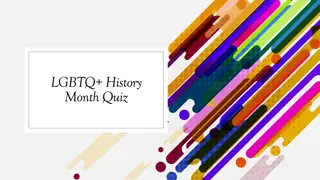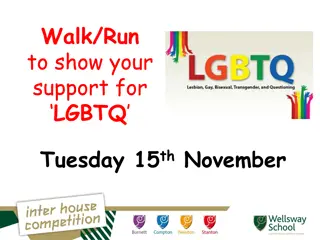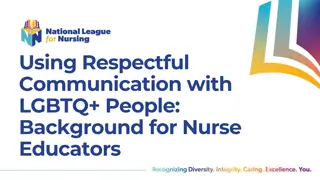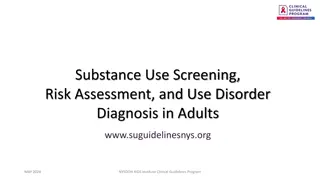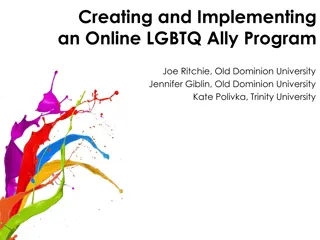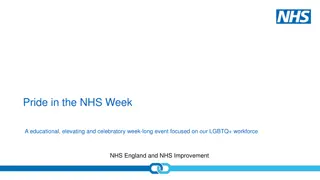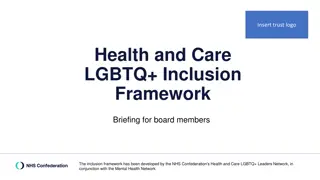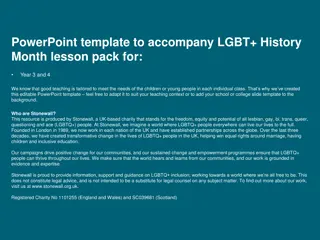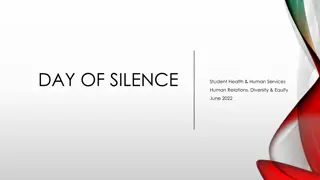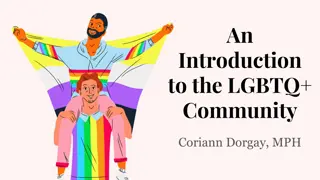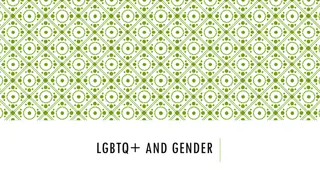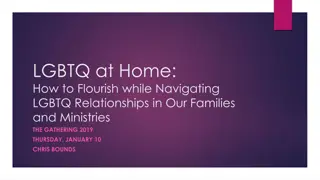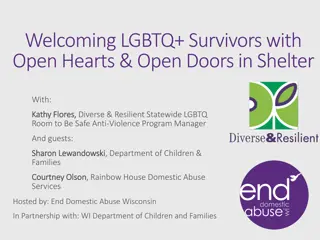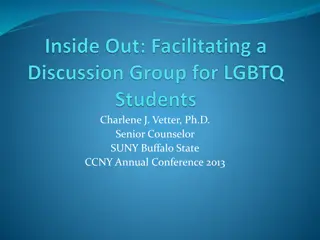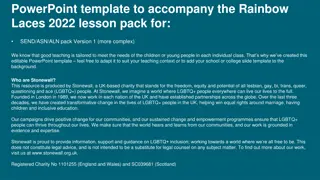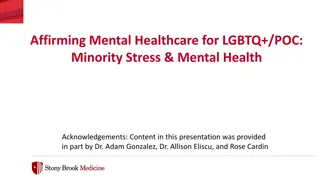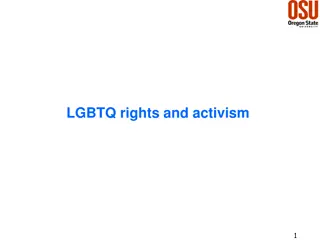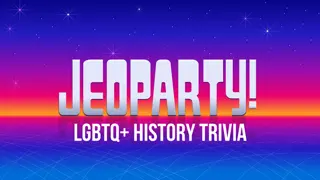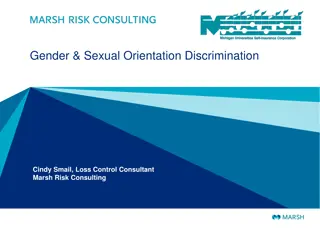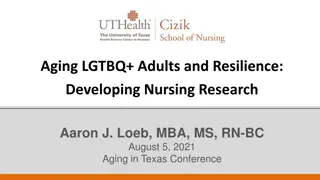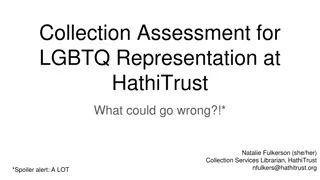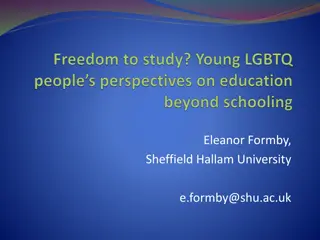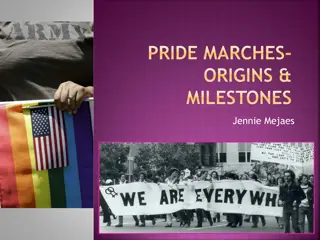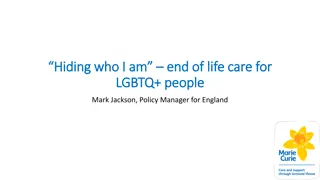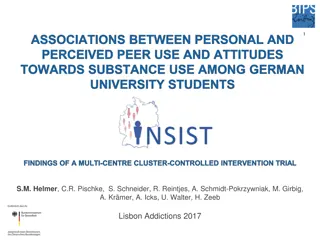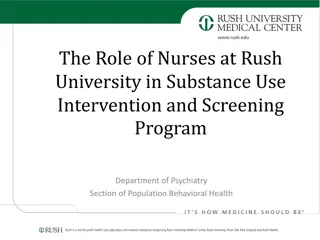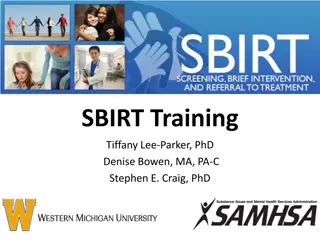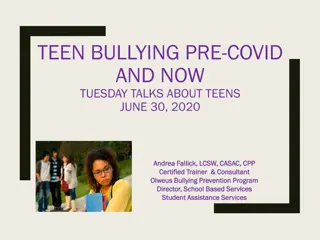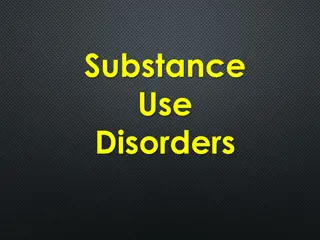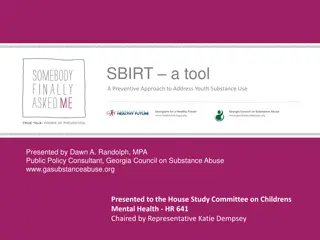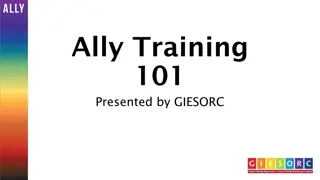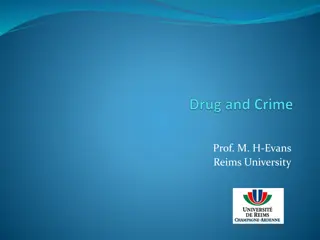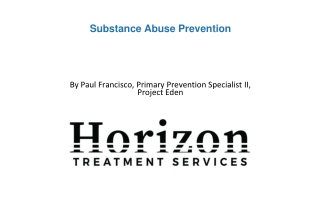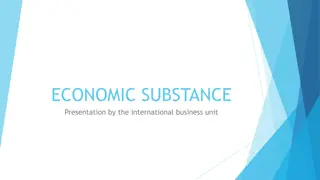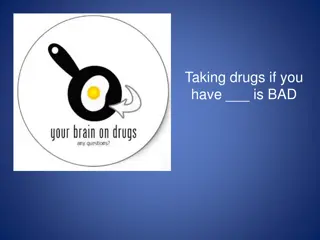Understanding Substance Use in the LGBTQ Community
Explore the complexities of substance use within the LGBTQ community, including historical perspectives, barriers to treatment, and tips for clinicians working with LGBTQ individuals in recovery. Diverse topics such as gender, sexuality, and addiction rates are covered to enhance awareness and support for this population.
Uploaded on Oct 08, 2024 | 0 Views
Download Presentation

Please find below an Image/Link to download the presentation.
The content on the website is provided AS IS for your information and personal use only. It may not be sold, licensed, or shared on other websites without obtaining consent from the author. Download presentation by click this link. If you encounter any issues during the download, it is possible that the publisher has removed the file from their server.
E N D
Presentation Transcript
Working with LGBTQ Individuals in Addiction By: Sabrina L. Valente, MA, CFTP
The Impact of Silence (Empathy Building Activity) List 3 people who are important to you 3 things you like to talk 3 places that are important to you What you did (or are doing) this weekend
Learning Objectives Identify 3 reasons why addiction rates are higher in the LGBTQ community Identify 2 barriers to treatment and the recovery process List 3 tips clinicians should use when working with LGBTQ individuals in recovery List 2 ways an agency can become more welcoming and affirming
Diversity requires ever-changing terminology
Sex vs. Gender Gender Expression Expression of gender Clothing Mannerisms Gender Internal sense of self Not binary Sex Anatomy Hormones Chromosomes
Substance Use in the LGBTQ Community
OBI Model of Sexuality Orientation Innate attraction Fluid but cannot be changed Romantic vs sexual HMMM Behavior Who we DO What we do with our bodies Does not need to match Identity How we choose to label ourselves
Substance Use Disorders in LGBT Community
Historical Lens to Addiction in LGBTQ Community 1960 s: illegal for queer individuals to publically assemble Bars were exceptions Queer bar culture grew out of fear and created safety, identity, community-building Stonewall Riots From that, SU became a means of expanding awareness, promoting pleasure, and expression of self and culture
The expression of self and culture though the use of substances became intricately connected to a flourishing sexual liberation movement that promoted free and open expression of the queer body as a political act and queer sexuality as a human right. Tom Hill, A Brief History of the Queer Experience with Addiction and Recovery (2012)
Substance Use is Embedded in Gay Culture Prominence of Gay Bars ETOH use is seen as part of social life Gathering places for LGBTQ Community Gay Club Scene PRIDE Events Targeted Advertisement
More Ads! Join the Bud Lite Party #LoveisLove
LGBT Specific Issues Family rejection/lack of social supports More rejecting = greater use Linked to poor health outcomes Increased risk for depression, SX attempts, and to have used illegal drugs Stigma and minority stress Levels vary Abuse and harassment Violence across all settings Bullying Childhood Sexual Abuse Intimate Partner Violence
LGBTQ Specific Reasons for Substance Use/Abuse Stigma Internalized Homophobia Shame Families of Choice Lower inhibitions/socially lubricate sexual encounters Numb/Ignore feelings/needs Lack of queer sex education
Co-Occuring Disorders Depression Anxiety PTSD Suicidal ideation/attempts Eating Disorders Major Medical Conditions
Logo: Fill in the Blank Video Is Sexuality and Substance Abuse Correlated?
Barriers to Treatment Mistrust and fear of not being accepted Prejudice/Discrimination from clients and staff Partners are not included in treatment Microaggressions Residential programs unaware of how to treat trans clients
Tips for Clinicians Family of Choice vs. Family of Origin Be aware of cultural issues Address internalized homophobia and minority stress Determine client s level of comfort with being LGBT Look at patterns around use, frequency, etc Develop treatment plans that address above concerns Consider having a LGBTQ track
More Tips for Clinicians Safe community supports/recovery services Names/Pronouns ASK then USE Affirm: identity, expression, diversity Beware of gendered spaces Avoid invading questions Be trauma-informed
How to be a Welcoming and Affirming Agency Make questions standard Inclusive paperwork Diversify artwork Have gender-neutral bathrooms Include sexual orientation and gender identity in non-discrimination policies Provide housing consistent with gender identity Address bullying Use non-verbal clues
References A Provider s Introduction to Substance Abuse Treatment for Lesbian, Gay, Bisexual, and Transgender Individuals https://store.samhsa.gov/shin/content/SMA12-4104/SMA12- 4104.pdf Sexual Orientation and Estimates of Adult Substance Use and Mental Health: Results from the 2015 National Survey on Drug Use and Health https://www.samhsa.gov/data/sites/default/files/NSDUH- SexualOrientation-2015/NSDUH-SexualOrientation-2015/NSDUH- SexualOrientation-2015.htm A Brief History of the Queer Experience with Addiction and Recovery (2012) http://sfonline.barnard.edu/a-new-queer-agenda/a-brief-history- of-queer-experience-with-addiction-and-recovery/


